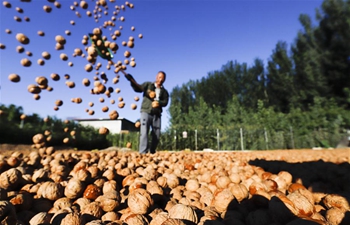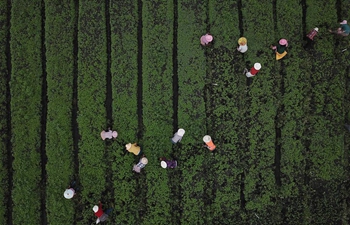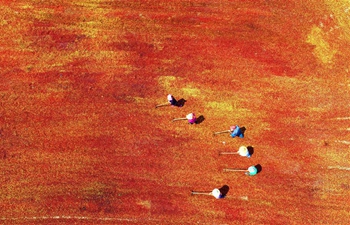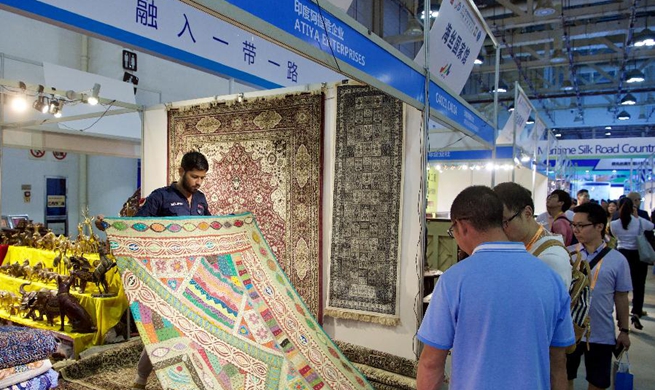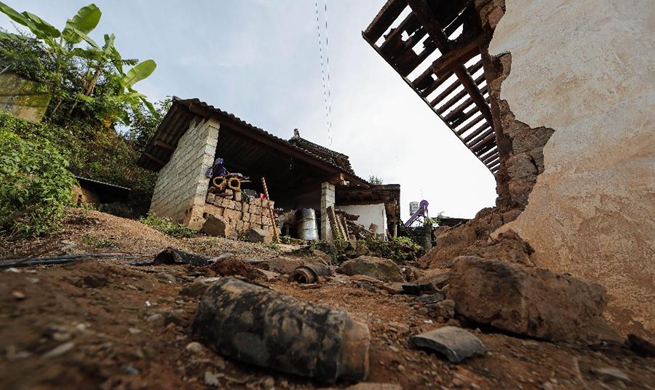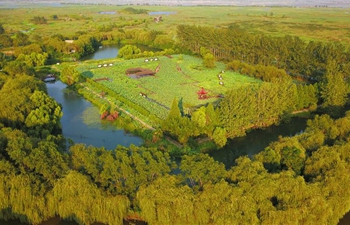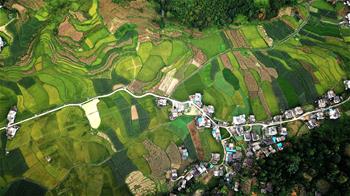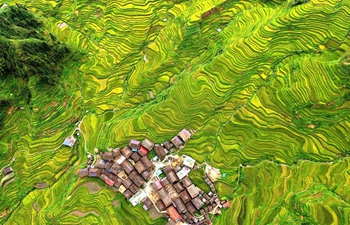by Peter Mutai
NAIROBI, Sept. 8 (Xinhua) -- Cultivation of green grams that has been embraced by farmers in the semi-arid eastern Kenya has proved a game changer thanks to enhanced food security and income for households.
The leguminous crop that was introduced two years ago in the vast plains of eastern Kenya has given farmers long used to crop failure, hunger and abject poverty, a new lease of life.
"I have made a bumper harvest this year and has paid my own dowry since my jobless husband was unable to do so," Elizabeth Mutuku, a green grams farmer in the southeastern Kenyan county of Makueni, told Xinhua during a recent interview.
The mother of four has been growing green grams since 2013 but has never harvested more than one bag of the crop.
"I harvested five bags of the crop and sold three bags at one dollar per kilogram that I used in paying for my outstanding dowry payments," said Mutuku.
Mutuku said that she used her savings to buy grade cattle and construct a chicken pen. She also purchased learning materials for her school-going children.
She has been growing maize over the years and occasionally intercropped with beans and green grams for domestic consumption but has been experiencing low harvests until a program called Feed the Future Kenya Accelerated Value Chain Development (AVCD) was introduced in her locality.
The program that is implemented by the International Crops Research Institute for Semi-Arid Tropics (ICRISAT) as a drought tolerant crop component in a three-year program (2013-2018), has led to the increased production of green grams in the recent past.
The 29 years old farmer now plans to lease additional land to her one acre piece of land to enable her to buy grade chicken with the money that she expect to realize during the coming 2019 harvest and also start saving money to care for tuition of her children who are in middle school.
"I want to start saving school fees from green gram farming in readiness for my son who will be completing his primary school education next year," said Mutuku.
Catherine Mbili has bought a dairy cow, built animal feed store, bought 40 chicken layers and is paying school fees for her two college going children that to green grams farming in the past two years.
"The program was introduced to us at a time when I was contemplating dropping farming all together due to perennial losses from maize and millet growing," said Mbili.
She stopped growing maize in the late 1990s due to negative impacts of climate change and adopted pigeon peas, cowpeas, millet and green grams.
Mbili said that since joining the AVCD program in 2014, she has been realizing good harvest but this year's harvest exceeded the previous years.
Joseph Kimeu, a cereals retailer at Kathonzweni market for the past 10 years, this is the first time that few green grams consumers have been purchasing the commodity.
"I have been making good profit in the past three years but this year seems the worst ever. I have to wait until October to sell my current stock," said Kimeu.
He revealed that he used to sell green grams at between 0.50 U.S. dollars - 0. 70 dollars per kilogram but this year's sale has dropped to 0.40 dollars a kilogram.
Kimeu said that due to the fact that the cereal is grown by many farmers since it is the only cash and food crop in the region, farmers require science based management approaches after harvesting season.
"The cereal is easily infested by pests if it is not stored well hence the need to improve its storage methods to help save the harvest," said Kimeu.
Following the bumper harvest, market forums were convened in Kitui and Makueni counties recently to negotiate on green gram prices, quantity in supply and demand, delivery period as well as propose marketing strategies to stabilize prices and enhance the margins for farmers and other market intermediaries.
The meetings that were attended by farmers and leaders agreed that the national government purchase the surplus green gram and sell for school feeding program, food relief, military, police and National Youth Training colleges.
Dr. Moses Siambi, ICRISAT's Eastern and Southern Africa Regional and Research Program Director noted that the program that is funded at 4.5 million dollars is aimed at promoting cereals and legumes that are not only climate resilient but are also nutritious and offer an alternative to farmers in the drylands that have very few other options.
"We started with 125,000 households who were given seeds with improved agronomic practices, taught post harvest handling and linked with the markets through farmers' groups," Siambi told Xinhua.
"The over production this year is not a crisis since Kenya is a net importer of 43,000 tons of green grams from Tanzania in meeting its domestic need that is 143,000 tons every year," he added.


